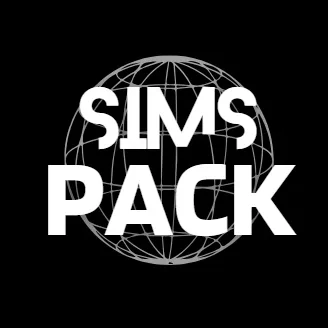Imagine depositing a check at Chase, expecting the funds to hit your account instantly, only to see a mysterious “hold rel mem cr” note on your statement. Frustrating, right? You’re not alone. This banking term confuses many, sparking questions like, “Why is my bank transaction on hold?” or “How long does a hold take to clear Chase?” In this guide, I’ll break down the hold rel mem cr meaning, explore why banks like Chase place holds, and share tips to navigate these situations. By the end, you’ll feel confident handling deposit holds and understanding your bank’s policies.
What Is Hold Rel Mem Cr?

You’ve probably seen “hold rel mem cr” on your Chase statement and wondered, “What does hold memo mean for banks?” Let’s clear the fog. This term, short for “hold release memo credit,” refers to a temporary hold on funds in your account, often tied to a deposit or transaction. Banks use it to verify funds before making them available. It’s a standard practice, but it can feel like a roadblock when you need cash fast.
Hold Rel Mem Cr Meaning
The phrase “hold rel mem cr” signals a memo credit hold, meaning the bank has credited your account but placed a hold on the funds. This happens when a deposit, like a check, needs verification. Chase, for example, might list this on your statement to show the funds are pending. It’s not a charge but a precaution to prevent fraud or bounced checks.
Why Banks Use Memo Holds
Banks like Chase use memo holds to protect themselves and you. If a deposited check is invalid, the bank risks losing money. Holds give them time to confirm the funds are legit. This process, while annoying, ensures your account stays secure. It’s common for large deposits or new accounts to trigger these holds.
How It Appears on Statements
On your Chase statement, “hold rel mem cr” might show up under pending transactions. It could be linked to a deposited item or a transaction needing approval. Sometimes, it’s paired with terms like “hold memo dr Chase meaning,” indicating a debit hold. Checking your online banking app can clarify what’s on hold and why.
Real-Life Example
In my experience, I once deposited a sizable check from a client, only to see “hold rel mem cr” on my Chase account. The funds showed as available, but I couldn’t withdraw them for days. A quick call to Chase explained it was a standard hold for large checks. Knowing this upfront would’ve saved me some stress!
Why Did Chase Put My Deposit on Hold?
You deposit money, expecting to use it right away, but Chase slaps a hold on it. Sound familiar? There are several reasons why Chase or other banks place holds on deposits. Understanding these can help you plan better and avoid surprises.
Large or Unusual Deposits
Chase often holds large deposits, especially if they’re out of the ordinary for your account. For example, a $5,000 check might trigger a hold while they verify the payer’s funds. This is standard for deposits over $1,000 or from unfamiliar sources.
New Accounts
If your Chase account is less than 30 days old, expect stricter hold policies. New accounts are riskier for banks, so they may hold deposits longer to prevent fraud. This can delay access to your money by up to seven business days.
Suspected Fraud
Banks use algorithms to flag suspicious activity. If a deposit seems fishy—like a check from an unknown source—Chase might place a hold. This protects you from scams but can feel inconvenient when you’re waiting for funds.
Returned Deposits
A deposited item returned Chase issue, like a bounced check, can lead to holds. If the bank suspects the deposit won’t clear, they’ll freeze the funds. This is often labeled as “deposited item returned return item ref” on your statement.
Bank Policy Variations
Chase’s hold policies vary by account type and customer history. Long-term customers with good standing might face shorter holds. Check your account agreement or ask a Chase representative for specifics on their deposit hold rules.
| Reason for Deposit Hold | Typical Hold Duration | Example Scenario |
| Large Deposit | 2–7 business days | $5,000 check from a client |
| New Account | Up to 7 business days | First deposit in a new account |
| Suspected Fraud | Varies, often 5–10 days | Check from an unknown source |
| Returned Deposit | Until resolved | Bounced check from a payer |
How Long Does a Hold Take to Clear Chase?
Waiting for a hold to clear feels like watching paint dry. So, how long does a hold take to clear Chase? The timeline depends on the deposit type, account status, and reason for the hold. Let’s break it down.
Standard Hold Timelines
Chase typically releases holds within 1–7 business days. Cash deposits often clear within one business day, while checks may take longer. For example, personal checks might be held for 2–5 days, while government checks clear faster, often within a day.
Factors Affecting Hold Duration
Several factors influence hold times. Large deposits, new accounts, or frequent overdrafts can extend holds. If a check is from an out-of-state bank, verification might take extra days. Your account history also matters—long-time customers often see quicker releases.
Expediting Hold Release
Want to speed things up? Contact Chase directly. Provide proof of the deposit’s legitimacy, like a payer’s contact info or a receipt. Visiting a branch can also help, as staff may manually release holds after review. Always check your Chase app for updates.
What I Learned the Hard Way
Here’s a tip I always give beginners: don’t count on deposited funds until the hold clears. I once planned a big purchase, assuming a check would clear quickly. The hold lasted five days, leaving me scrambling. Now, I always confirm with Chase first.
Chase Hold Release Process
When the hold lifts, you’ll see the funds move from “pending” to “available” in your account. Chase may notify you via email or the app. If the hold persists beyond seven days, call Chase at 1-800-935-9935 to inquire about delays.
| Deposit Type | Typical Hold Time | Notes |
| Cash | 1 business day | Fastest to clear |
| Personal Check | 2–5 business days | Depends on payer’s bank |
| Government Check | 1–2 business days | Often prioritized |
| Large Deposit | 5–7 business days | Requires verification |
Common Issues with Hold Rel Mem Cr
Holds can spark confusion, especially when funds seem available but aren’t. Let’s tackle common issues tied to “hold rel mem cr” and how to resolve them, based on real user experiences, like those shared on Reddit.
Hold Rel Mem Cr But Funds Are Available Reddit
You might see “hold rel mem cr but funds are available” on your Chase app, yet you can’t withdraw the money. This happens when Chase credits your account but restricts access until verification. Reddit users often report this with large checks or ACH transfers. Check your statement for the hold’s status.
Hold Rel Mem Cr Charges
Some worry about “hold rel mem cr charges.” Good news: holds aren’t fees; they’re temporary freezes. However, if a hold leads to an overdraft (e.g., spending funds before they clear), you might face fees. Monitor your balance to avoid surprises.
Deposited Item Returned Chase
A “deposited item returned Chase” notice means the check or payment bounced. This can extend holds or freeze your account until resolved. Contact the payer to confirm funds or ask Chase for next steps. This issue often appears as “deposited item returned return item ref.”
Bank Hold Disputes
If a hold seems unfair, dispute it. Call Chase or visit a branch with proof of the deposit’s validity. Reddit threads on “hold rel mem cr reddit” suggest persistence pays off—escalating to a supervisor can sometimes speed up resolution.
Hold Release Memo Credit
Once verified, Chase issues a “hold release memo credit,” making funds fully available. This might take a few days, but you’ll see the update online. If the hold lingers, double-check with Chase to ensure no issues, like a returned deposit, are delaying it.
5 Actionable Tips to Manage Bank Holds
Dealing with holds can be a hassle, but you can take control. Here are five actionable tips to manage “hold rel mem cr” situations and avoid delays.
- Verify Deposits Early: Confirm with the payer that their account has sufficient funds before depositing checks. This reduces the risk of holds or returned items.
- Use Direct Deposits: Set up direct deposits for paychecks or recurring payments. These typically clear faster than checks, often within one day.
- Monitor Your Account: Check your Chase app daily for hold updates. Look for “hold rel mem cr” or “pending” statuses to stay informed.
- Build a Relationship with Chase: Long-term customers with good standing often face shorter holds. Maintain a positive account history to benefit.
- Contact Chase Promptly: If a hold lasts too long, call or visit a branch. Provide documentation to speed up the release process.
Comparing Bank Hold Policies
Not all banks handle holds the same way. Here’s a comparison of Chase, Bank of America, and Wells Fargo’s deposit hold policies to give you a clearer picture.
| Bank | Standard Hold Time | Large Deposit Hold | New Account Hold |
| Chase | 1–7 business days | Up to 7 days | Up to 7 days |
| Bank of America | 1–5 business days | Up to 5 days | Up to 7 days |
| Wells Fargo | 1–7 business days | Up to 7 days | Up to 10 days |
FAQs About Hold Rel Mem Cr
What does hold rel mem cr mean on my Chase statement?
It’s a memo credit hold, showing funds are credited but temporarily unavailable until verified. Check your Chase app for details.
Why is my bank transaction on hold?
Transactions are held to verify funds, prevent fraud, or due to large deposits. Contact Chase for specifics.
How long does a hold take to clear Chase?
Holds typically clear in 1–7 business days, depending on the deposit type and account status.
Can I dispute a hold rel mem cr?
Yes, call Chase or visit a branch with proof of the deposit’s legitimacy to request a review.
Why was my deposited item returned Chase?
A returned item means the check or payment bounced. Contact the payer or Chase to resolve it.
Are there fees for hold rel mem cr?
Holds aren’t fees, but spending unavailable funds could trigger overdraft charges. Monitor your balance.
Also Read: 3d659.com: Expert Financial Insights, Investment Strategies & Tax Planning
Conclusion
Navigating “hold rel mem cr” can feel like decoding a secret banking language, but it’s just a temporary hold to ensure your deposits are secure. Whether it’s a large check, a new account, or a fraud alert, Chase uses holds to protect you and themselves. By understanding why holds happen, how long they last, and how to manage them, you can avoid stress and plan better. Use the tips shared—like verifying deposits early or monitoring your account—to stay ahead. Next time you see “hold rel mem cr” on your statement, you’ll know exactly what to do.




